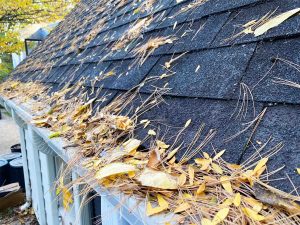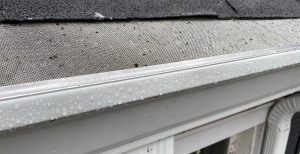Finding comprehensive and credible gutter guard reviews is darn near impossible. Search the web and you’ll find plenty of paid-placement services such as NCR (not National Cash Register), ConsumersAdvocate.com and many other no-name websites claiming to review gutter guards. If you look under the surface, however, you’ll find that these websites are generally nothing more than paid placement advertising and lead generation websites disguised as legitimate review services.
Oh, you thought these sites are legitimate and provide unbiased information?
Sorry to break the news to you. They’re only as legit as the revenue they generate from the advertisers who pay to keep them in business.
What about Gutter Guard Consumer Reports?
Even legitimate testing publications like Consumer Reports sorely missed the mark with its one and only gutter guards review – all the way back in September 2010 – a decade ago.
And why hasn’t Consumer Reports conducted another review of gutter guards in a decade or more?
Let’s not kid ourselves, finding a quality gutter guard can be a daunting task. Unenviable at best and confusing at worst, how can every professionally installed gutter guard be the “best” on the market as manufacturers often claim?
How do you know which gutter guard is best?
I began testing gutter guards in 2008. Not so much for your benefit but more for my benefit. As someone who sells gutter guards, it’s in my best interest to locate and offer the best gutter guards for the job. I learned a long time ago that no one gutter guard is the “best.” Much of what makes a gutter guard work is how well it interacts with the environment in which it is installed.
That’s likely why there are so many gutter guards on the market. Perforated gutter guards can work just as well as micro mesh gutter guards in the correct environment. Installed in the wrong environment or under the wrong conditions, any gutter guard is subject to failure. Some will fail under most conditions while others will work well in most conditions.
Frankly, it’s only through testing that we can separate the good from the bad and find a winner or winners.
But the irony is that none of the manufacturers are testing their products against their competitors – at least not publicly. They’re only touting how their products are the best, absent any qualitative data. Maybe they are the best. Maybe they’re the worst. Or, just maybe, they are average.
Are you comfortable solely taking their word for it?
Well, if nobody tests gutter guards in a real-world environment, then you’ll never know, will you?
Even though many gutter guards look similar, the way they perform could vastly differ. In my opinion, the only way to know which gutter guard is going to perform the best is to subject many gutter guards to a battery of tests in the worst conditions.
Whatever the worst condition is for any gutter is also generally the worst condition for gutter guards.
What do I mean by that?
Your gutters fail because you have trees. In some cases, you may have lot line trees – trees at a distance — that occasionally blow over enough leaves and debris to clog your gutters every once in a while. You may live under a canopy of trees or, perhaps, even in the woods. In these environments, your gutter situation is more dire.
Whether you have Pines, Oaks or Maples, your gutters are likely subjected to a regular onslaught of needles, tassels and helicopters in the spring and lots of leaves in the fall. You might be (or should be) cleaning your gutters quarterly, monthly or weekly – not just once or twice a year like most people do.
The only way to know what gutter guard works best in your environment is having the ability to choose from a number of options.
That’s why we’re taking on the responsibility of testing several types of gutters guards in a real-world environment – on my garage.

Before we get into testing methodology, why my garage and why am I qualified to test gutter guards?
Let’s start with the easy answer. My garage is like two worlds separated by 24 feet. It has a south side and a north side. Pretty ideal for testing gutter guards. The south side gets lots of sun and the north side is more shaded. The garage is surrounded by several tree species, including Locust, long needle Pines, Oaks, and Maples.
I generally say that the three worst offending trees for any gutter or gutter guard are Locusts, Pines and Oaks. Many believe Maples rank up there, too. Throw in River Birch for good measure, and your gutters are doomed. Many gutter guards, too.
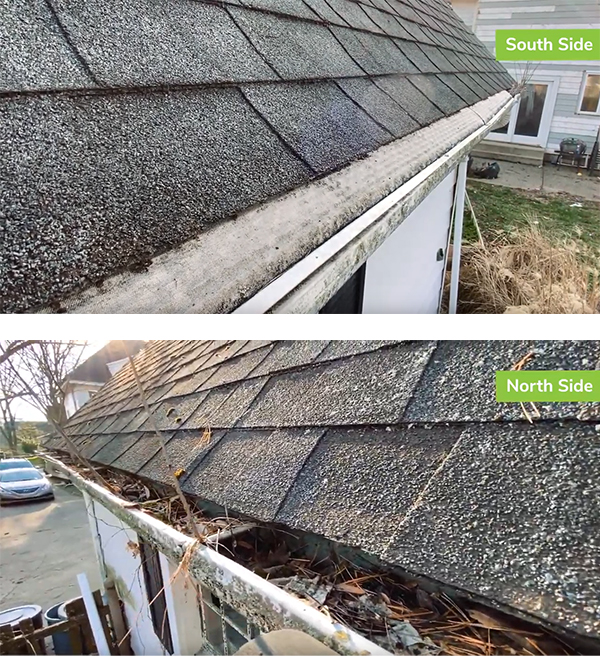
Now to the more difficult question: Why am I qualified to test gutter guards?
I got my start selling gutter guards in 1996. I worked with the inventor of a gutter guard. He and I became friends. I was his eyes and ears on the ground and on the ladder. I would report back to him what worked well, what didn’t work well, and I was more than willing to share my suggestions for improving his product. I took ownership of the process without owning the rights to his invention.

I have spent thousands of hours in the gutter: cleaning, repairing and installing gutters and gutter guards. I understand asphalt shingle, metal, slate tile, wood shake, and rubber roofing systems. I have worked with all types of gutters, including K-style, box, and half-round gutters made from aluminum, galvanized metal and copper.
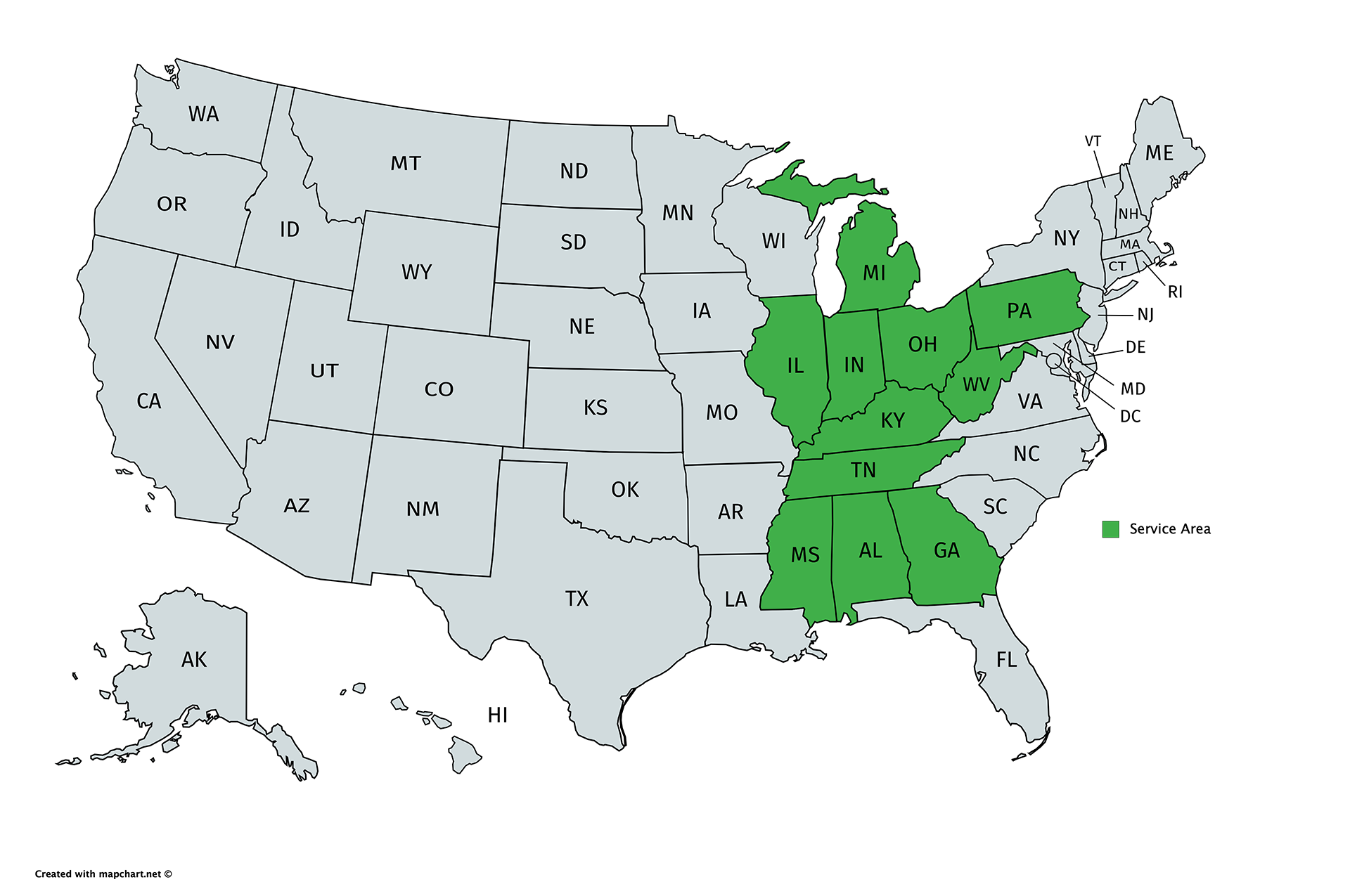
I have traveled from Michigan to Mississippi and from New Jersey to Washington State installing gutters and gutter guard systems. I have seen and worked on every type of home and virtually every scenario in many climates and weather conditions.
Odds are, I have passed through your state, town, or driven down your street at one time or another. I am at a point in my career where I can often tell you what you need to do to fix your gutter problems before I get out of my car to talk with you.
In a nutshell, I have travelled a lot of miles, worked on thousands of gutters, and learned much in nearly 25-years crisscrossing the United States.
Our company’s single objective is helping homeowners solve gutter and water problems. Knowledge is paramount. Focusing on quality and doing the job “right” the first time is how we approach every project we undertake. Offering an array of products and services to support this mission is just as important as understanding the nuances of the job. It’s a combination of all these factors that allows us to successfully solve problems.
If you reread what I just said, I didn’t say anything about offering one gutter guard, did I?
In fact, we’ve sold and installed many types of gutter guards. Cinch, LeafFilter, Leaf Solution, Leafree, LeafLock, Gutter Love, MasterShield, Rhino, Gutter Rx, Leaf Relief, Clean Mesh and Gutter Guard just to name a few.

We have removed many gutter guards, including Gutter Helmet, LeafGuard, LeafFilter, GutterGlove Pro, Leaf Relief (2 kinds), Amerimax, various expanded metal screens, Gutter Shutter and Gutter Guardian to name several more.
Along the way, I have tested several gutter guards on my homes in Ohio and Tennessee. Testing has never been as extensive as current and future tests will be, but it has been comprehensive enough to have a good idea of what works well and what doesn’t. Couple this with all the systems we’ve seen in the field, and we’ve touched every style and type of gutter guard available on the market today.
I hope you agree, these are several factors that qualify me as an expert in the field to test gutter guard systems.
How are we ensuring the gutter guards will be tested and judged fairly?
The gutter guards have been installed in neutral territory. They have an equal chance of performing well or failing based on their own merits. Mother Nature is doing all the work.
We installed all new 6” gutters on the garage in March 2020.
Rather than installing a single section of gutter on each side of the garage, we installed six 4-foot sections on both sides of the garage.
We have a total of 12 sections of gutter on the garage. Each section of gutter has been isolated from the section next to it. Each section of gutter has its own downspout. Each gutter guard is the same 4-foot length and installed on the same size 4-foot section of gutter.
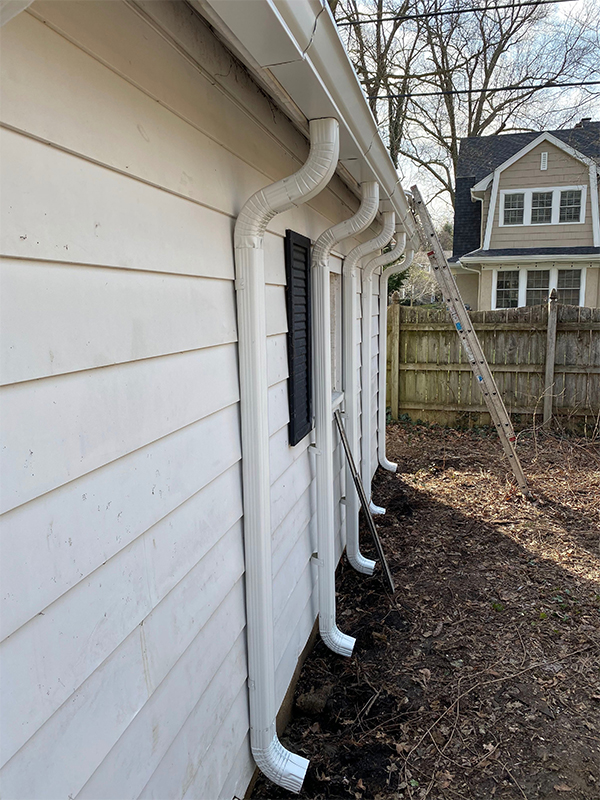
The trees overhanging the garage will drop its leaves, flowers, seeds and needles equally on each side of the garage. For instance, a tree that is located on the south side of the garage may drop more flowers on the south side of the garage than the north side of the garage, but the flowers it drops will be evenly distributed across the 6 sections of gutter on that side of the garage. The same is true for trees that are more prevalent on the north side of the garage.
Six gutter guards are located on the south side of the garage and 6 gutter guards are located on the north side of the garage. LeafFilter, MasterShield and LeafLock gutter guards are located on both sides of the garage while the other 6 gutter guards are featured on either the north or south side of the garage.
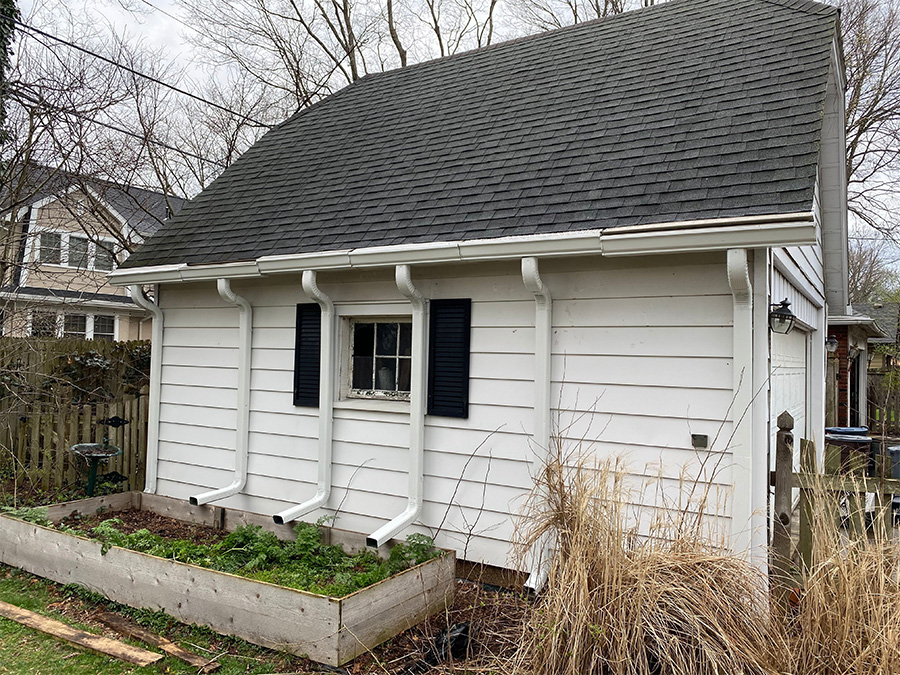
MasterShield and LeafFilter were selected to sit next to each other since both products were developed by the same inventor, Alex Higginbotham. They have similar design characteristics, so it made sense to place them next to each other. LeafFilter was Higginbotham’s first micro mesh gutter guard, while MasterShield was introduced a few years later.
On the opposite side of LeafFilter, we placed Gutter Glove Pro on the south side and Leaf Solution on the north side of the garage. Again, these systems would fall into a comparable class of gutter guard (style and price point) with MasterShield and LeafFilter, so they round out the top 3 gutter guards on each side of the garage.
We then grouped LeafLock, Gutter Glove’s Easy-On, and HomeCraft’s diamond pattern micro mesh screen next to each other because they have similar characteristics. LeafLock is on the north and south sides of the garage while Gutter Glove’s Easy-On is located on the north side of the garage. The diamond pattern micro mesh screen is located on the south side of the garage.
The guards at the opposite end from MasterShield include Clean Mesh on the north side of the garage and the solid gutter cover, LeaFree, on the south side of the garage.
What is our testing methodology?
Most homeowners want to know 3 things: how well will the gutter guards shed leaves and debris; how well they will handle water, and how often do they have to be maintained. Within the context of these three broad categories, we will look at things like how much leaves and debris cling to the face of the gutters, how much water drips from the bottom of the gutters, and how likely is it that your gutter guards or gutters will clog?
The best way to test the effectiveness of each system is to let Mother Nature do all the work. Fortunately, we were able to install the gutter guards early enough in the year to get ahead of the blossoms, helicopters and tassels that fall from the trees every spring. As a result, you will be able to see exactly how the gutter guards perform during the two most challenging periods of the year: spring and fall.
Consumer Reports simulated rainfall with a series of water tubes installed on the roofs of its testing units. However, we get plenty of rain in the Midwest in the spring and fall, so we’re going to let it happen naturally. While using a hose connected to a water faucet is an option, it’s a poor substitute for rainwater naturally falling from the sky.
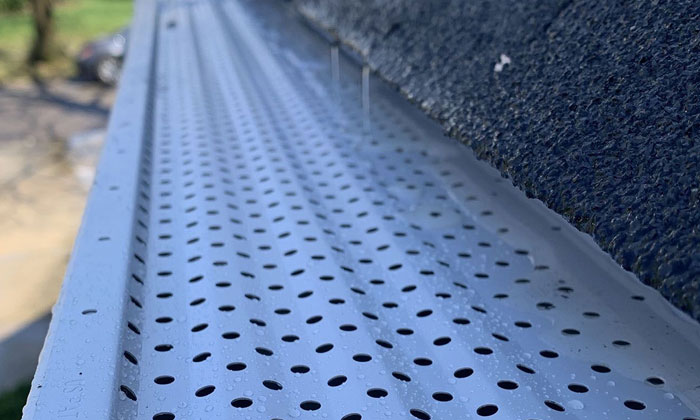
How long are your test sections and how did you isolate the gutter guards from one another?
The gutter guards we’re testing are 4-feet long. Most professionally installed micro mesh and solid gutter guards range from 4-5 feet in length, so by standardizing on 4-foot sections, we were able to use the entire length of the shortest available gutter guards while maximizing the number of slots available for testing on the garage.
By isolating each section of gutter, we’re able to individually measure the amount of debris and water that lands on the gutter guard’s surface, enters into the gutters, and exits the downspouts. This will allow us to equally measure water flows when it rains, effectively understanding how much water each system handles.
We also added screen at the downspout openings so that we could capture debris that enters into the gutters. While most of the guards we’re testing will keep virtually all debris out of the gutters, you just never know what might sneak into the gutter. We used the same screen inside all the gutters and the screen is small enough to capture most debris that enters the gutter, yet porous enough to let water exit the downspouts.
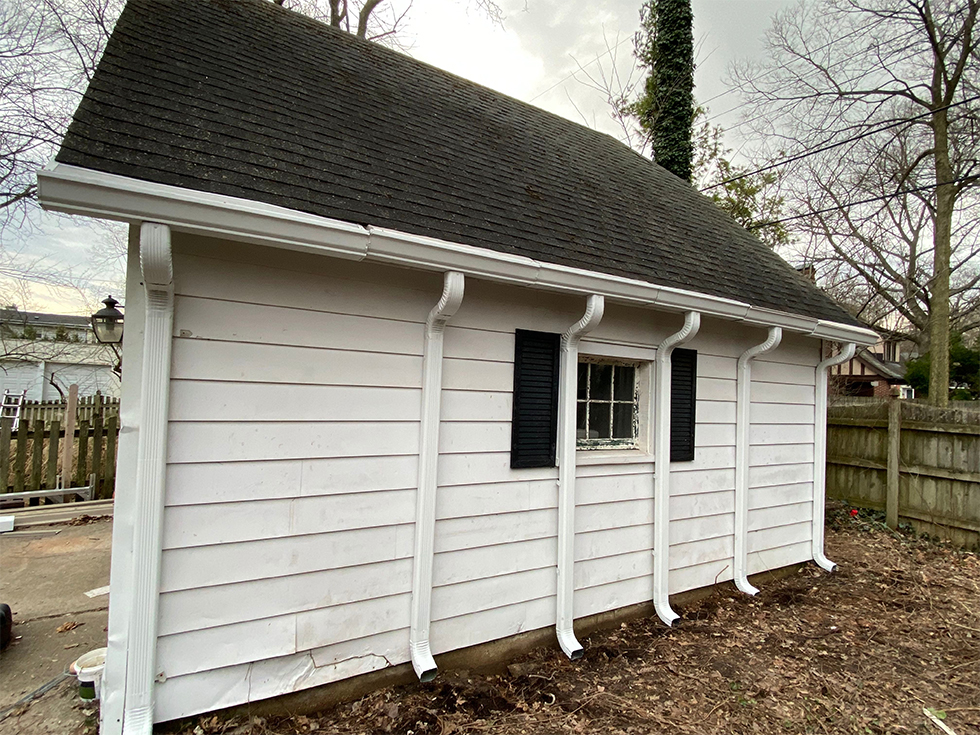
Is the tester biased?
Some might argue that since I am in the business of selling gutter guards, I cannot remain neutral. You might think that I have a vested interest in certain gutter guards winning and others losing. However, by letting Mother Nature do all the work, I am truly a neutral party. The best I could do to sway the results one way or the other would be to create testing criteria that favors the products we sell.
However, I’ve already told you what we’re testing: How well the gutter guards shed debris and how well they handle water, among other things. That’s what most homeowners care about, so there’s no real mystery to what we’re doing. Since Mother Nature is doing all the heavy lifting, it’s simply up to me to photograph, video tape and comment on what we see and learn over time.
All gutter guards were installed according to the manufacturers’ guidelines. In other words, the gutters were positioned accordingly along the fascia boards in order to provide the best chance for each gutter guard to succeed in the tests. Each gutter guard will be fairly depicted, represented and showcased.
The design characteristics of each gutter guard will determine the winners and losers. Not me!
I am just as curious as you are to see which gutter guards shine and which disappoint.
Since I will be photographing, shooting video with commentary about how the gutter guards are performing in the best and worst conditions, and writing articles about each of the products, it’s possible that I could show bias in my commentary. If nothing else, I will be complimentary and critical when warranted.
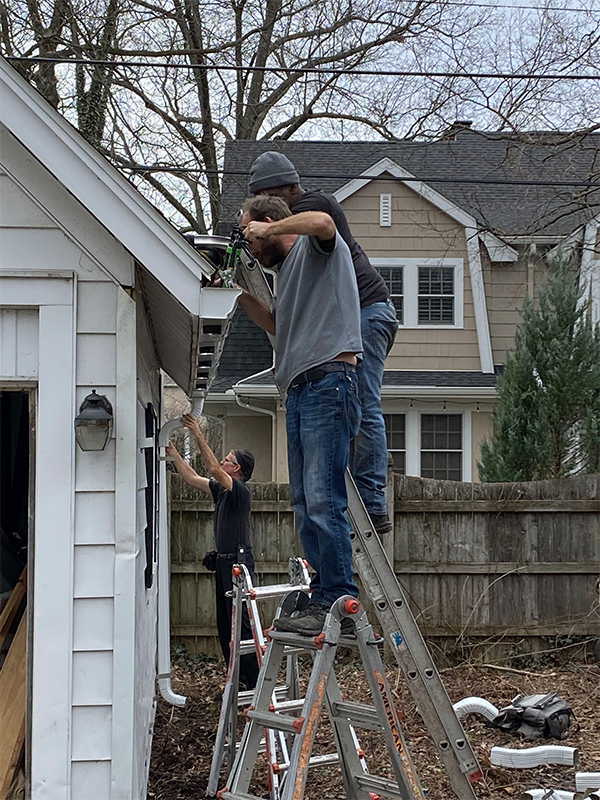
Like a securities trader featured on CNBC television, we’re disclosing our positions up front so there aren’t any questions of impropriety and hidden bias down the road.
My company, Gutter Guards Direct, sells 3 of the products that are currently being tested: MasterShield, LeafLock and LeaFree.
We picked 8 micro mesh gutter guards and 1 solid gutter cover for the 1st round of testing. Of the micro mesh gutter guards being tested, we have been dealers for or installed 5-of-8 featured systems.
The gutter guards we have been dealers for and installed include:
- LeafFilter (2008-2011)
- Leaf Solution (2010-2013)
- Clean Mesh aka MicroScreen (2013-2019)
- LeaFree (2010-Present)
- Gutter Love aka LeafLock (2018-Present)
- MasterShield (2019-Present)
Other systems being tested that we have never represented include:
- GutterGlove Pro
- Easy-On by Gutter Glove
- Homecraft’s diamond micro mesh gutter guard
We acquired the products from our existing inventory or purchased them from manufacturers and wholesale suppliers. In one case, we reused a section of GutterGlove Pro we removed from a job site and ensured the product was in like-new condition prior to testing it.
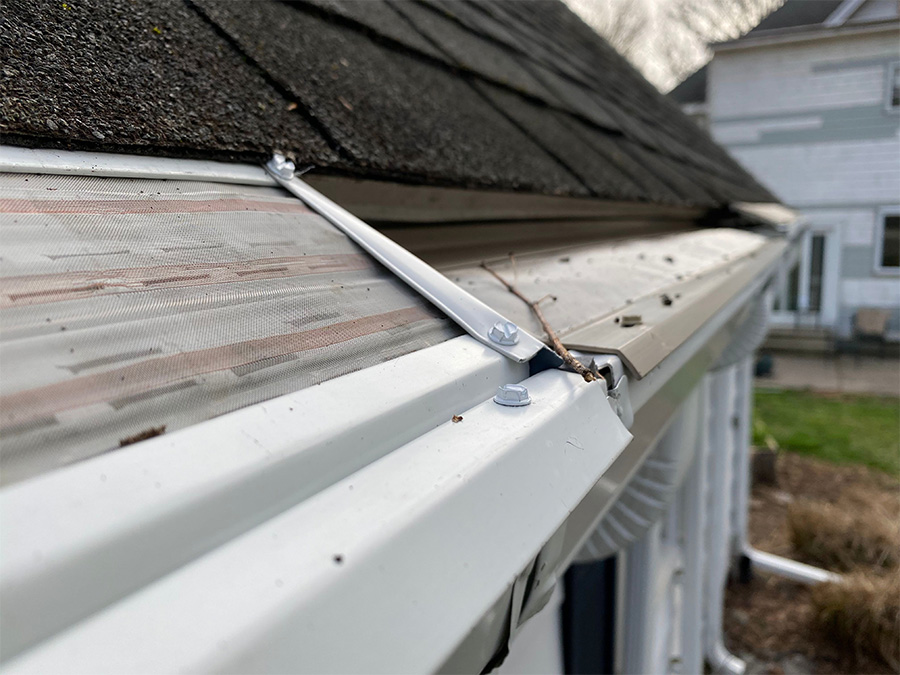
How are we tabulating test data and declaring a winner?
We have hired a consultant to independently analyze and verify the data we collect. We’ll determine the criteria based on the questions we are asked most often and seem most important to homeowners. We’ll include additional variables that you might find interesting and will assign values to each of those factors. We’ll let the experts crunch the numbers and tabulate the results to arrive at a winner.
At the conclusion of the tests, we’ll declare a winner or winners based on how well they shed leaves and debris, handle water, and other factors that you may find interesting and ultimately important when evaluating gutter guards for your own home.
Then we’ll do it all over again, pitting the winners of round one with the challengers of rounds 2, 3 and maybe even 4 and 5.
Be sure to check back regularly for new content featured on our blog, YouTube videos and consumer comments. We want this to be as interactive as possible, so please ask lots of questions and leave comments.




